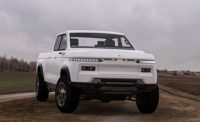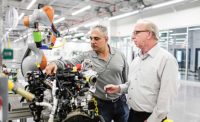Most of the recent buzz surrounding electric vehicles has focused on cars, trucks and other land-based products. But, there’s also a revolution occurring in the air with a new class of all-electric vertical takeoff and landing (eVTOL) aircraft. They’re the focus of urban air mobility efforts—a cross between flying cars and personal helicopters.
Companies around the world are scrambling to develop two- and four-seat battery-powered aircraft that are quiet and safe to operate in cities. Some of the leading contenders are U.S. companies such as Archer Aviation Inc. and Joby Aero Inc., which both plan to be operating fleets of eVTOLs in Miami by the end of 2024. Meanwhile, German startups Lilium and Volocopter are hot on their heels.
Joby recently became the first company to successfully fly an eVTOL aircraft as part of NASA’s Advanced Air Mobility National Campaign. The initiative is designed to promote public confidence in emerging aviation markets, such as passenger air taxis, through flight testing in realistic scenarios. In addition, data analysis of acoustic signatures will assist in the development of regulatory standards for these emerging aviation platforms.
With a maximum range of 150 miles and a top speed of 200 mph, Joby’s S4 aircraft, which it plans to assemble at a new factory in Monterey, CA, is designed to carry four passengers and a pilot with zero operating emissions. It’s powered by six propellers that tilt to enable vertical takeoff and efficient cruise flight.
The number of blades, blade radius, tip speeds and disk loading of the aircraft were all selected to minimize the acoustic footprint and improve the character of the noise produced. The propellers can also individually adjust their tilt, rotational speed and blade pitch, helping to avoid the blade vortex interactions that cause the “wop wop” sound typically associated with traditional helicopters.
“Flying cars have the potential to eliminate a lot of time and increase productivity and open the sky corridors to transportation,” claims Chao-Yang Wang, Ph.D., a mechanical engineering professor and director of the Electrochemical Engine Center at Pennsylvania State University. “But, eVTOL vehicles are very challenging technology for batteries.”
“The automotive electric vehicle revolution is paving the way for urban air mobility, but people must not be naive in thinking that EV batteries will suffice for electric flight,” warns Wang, who also serves as co-director of the Battery and Energy Storage Technology Center at Penn State. “The fast-charging requirements, 30x increase in energy throughput and 3x power requirements demand a new generation of battery.
“One entirely unique aspect of eVTOLs is that their batteries must always retain some charge,” says Wang. “Unlike cellphone batteries, for example, that work best if fully discharged and recharged, a flying car battery can never be allowed to completely discharge, because power is needed to stay in the air and to land. There always needs to be a margin of safety.
“Batteries for eVTOLs need very high energy density so that you can stay in the air,” explains Wang. “And, they also need very high power during take-off and landing. It requires a lot of power to go vertically up and down.”
According to Wang, eVTOL batteries also need to be rapidly recharged to capitalize on high demand during rush hours. He sees these vehicles having frequent take-offs and landings, which would require recharging quickly and often.
“Commercially, I would expect eVTOLs to make 15 trips, twice a day during rush hour to justify the cost of the vehicles,” says Wang. “The first use will probably be from a city to an airport carrying three to four people about 50 miles. On short trips, the average speed would be 100 mph and long trips would average 200 mph.”
Weight and performance are critical for making eVTOLs economically viable transportation alternatives. They need ultra-high-energy density, because they carry battery packs into the air; very high power during takeoff and landing; and fast-charging capability (less than 15 minutes) between flights.
Wang says eVTOLs require different technology than batteries developed for use in electric cars. “They need higher energy density and higher discharge rates (three times typical highway driving),” he points out. “eVTOL batteries also need much longer cycle life, because they do six cycles per day, whereas some electric cars are only completing 45 to 50 cycles per year.”
Wang believes that thermally modulated lithium-ion battery technology may help address the challenge.
“Thermally modulated batteries are much more powerful, due to short excursion of thermal stimulation to boost the power and 10-minute healthy charging for 200 watt-hours per kilogram,” explains Wang. “Both features are unprecedented in lithium-ion batteries and are particularly desired by eVTOLs.”





